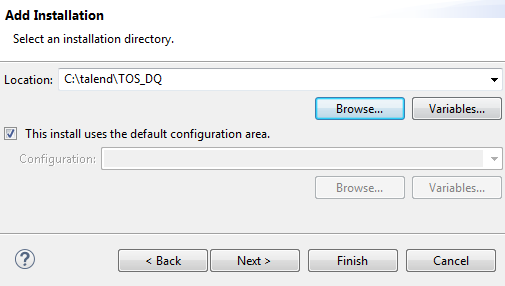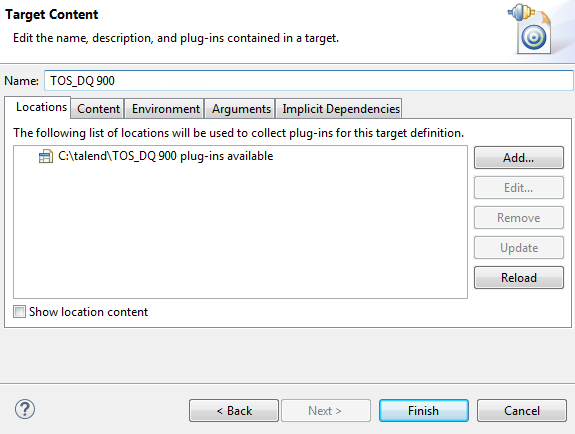Creating a Java archive for the user-defined indicator
Before creating a Java archive for the user defined indicator, you must define,
in Eclipse, the target platform against which the workspace plugins will be compiled and
tested.
Before you begin
Procedure
-
Define the target platform:
-
Create a Java archive for the user defined indicator
Results
The Java archive is now ready to be attached to any Java indicator you want to create in the Profiling perspective.



